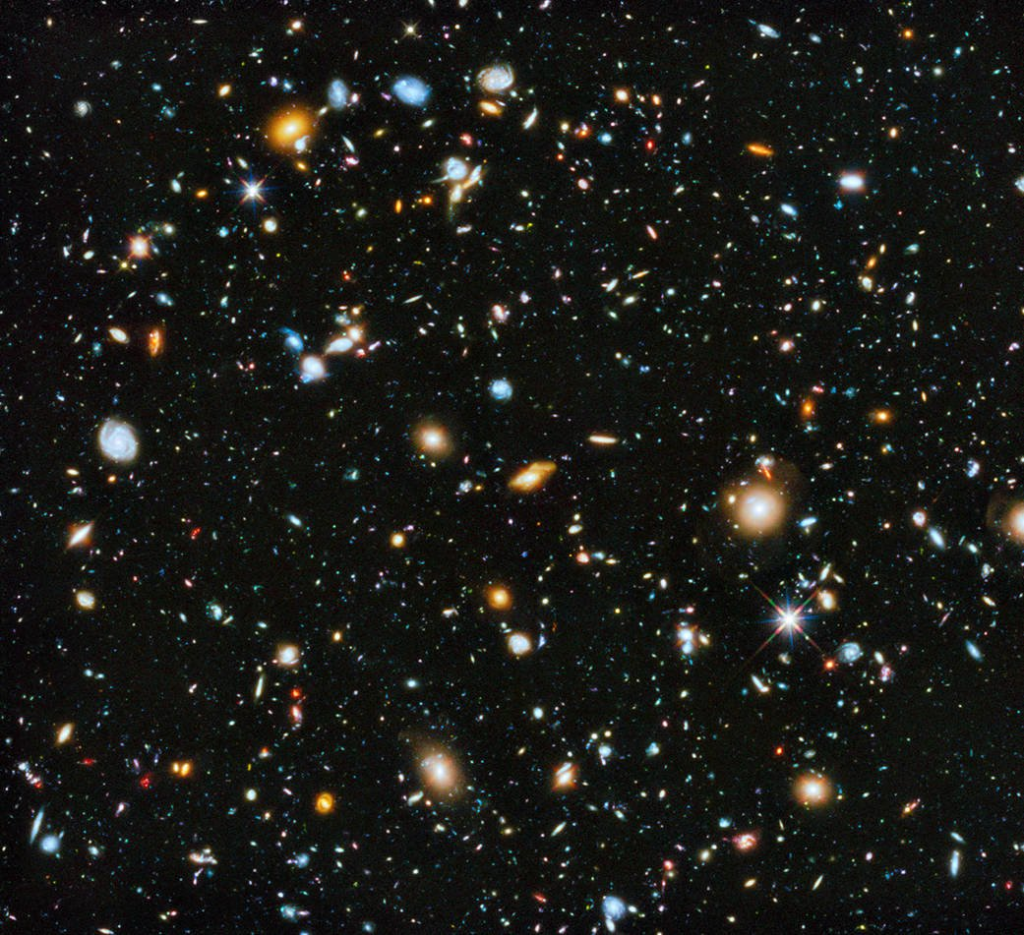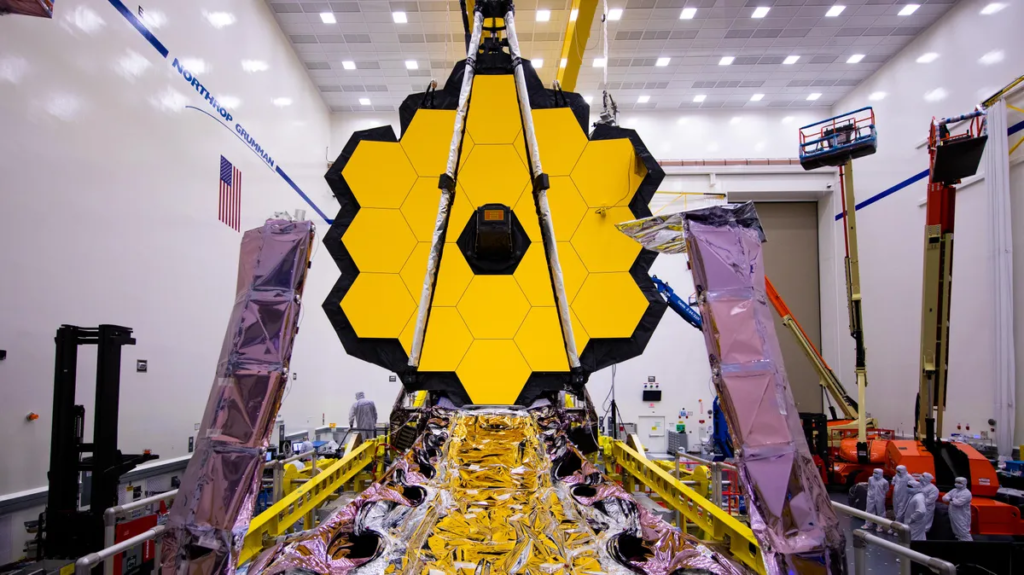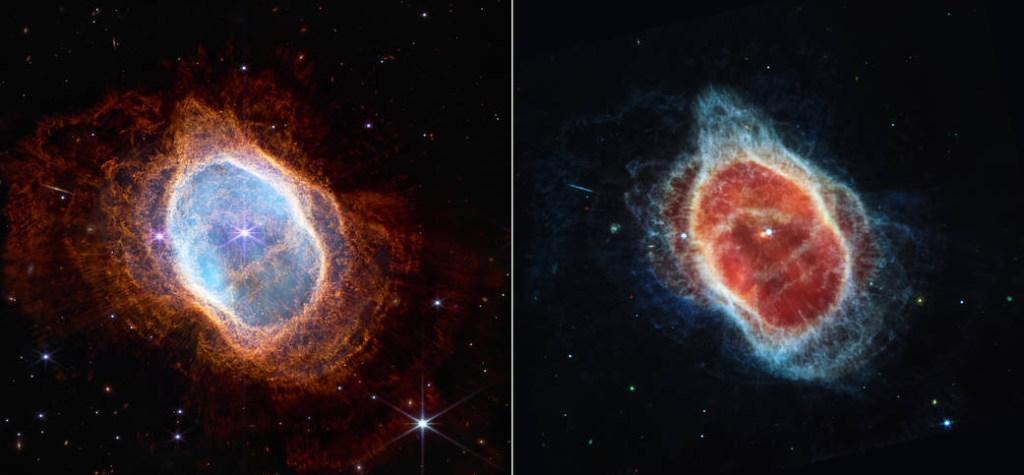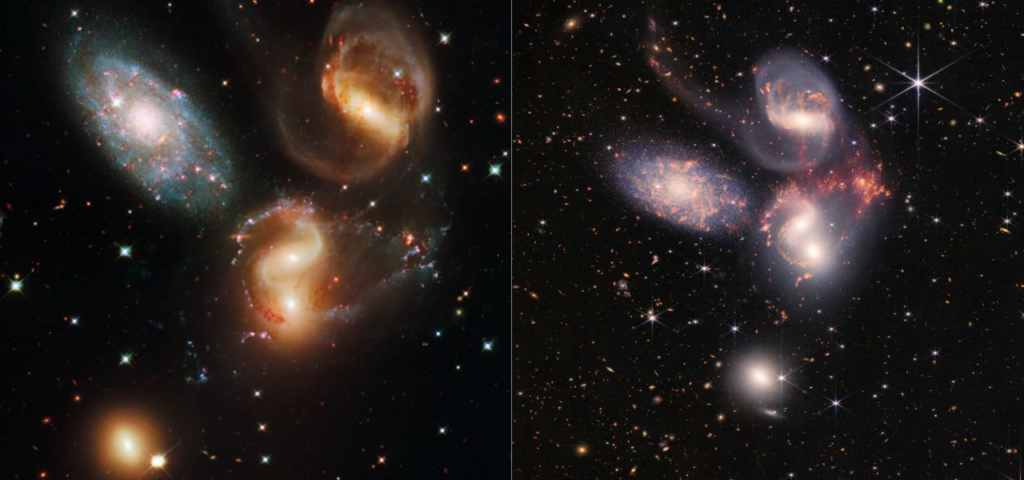On Monday, President Biden hosted a gathering at the White House where he unveiled the James Webb Space Telescope’s first scientific photograph. It is one of the targets that NASA earlier disclosed on Friday, July 8: galaxy cluster SMACS 0723. SMACS 0723 is located in the southern constellation of Volans at a distance of 5.12 billion light-years from our planet. The image showed how this galaxy cluster looked 4.6 billion years ago.

This is the deepest and brightest infrared picture of the distant universe yet taken by NASA’s James Webb Space Telescope. The photograph known as Webb’s First Deep Field is rich in detail. It is a composite picture created from pictures acquired over a period of 12.5 hours at various wavelengths. This animation shows the amount of additional information seen by the more recent probe by contrasting the Hubble Space Telescope with JWST’s images of SMACS 0723.
The area of the cosmos depicted in this picture is about the size of a grain of sand held out in front of someone. All the images captured by the telescope are anticipated to result in revelations that will improve our understanding of how the cosmos started some 13.7 billion years ago.
A machine learning model known as Morpheus was created by researchers and taught to sift through pictures, identify faint blob-shaped objects from the deep abyss of space, and assess whether or not they are galaxies and, if so, what kind. In simple words, it will enable pixel-level morphological classifications of cosmological images. NVIDIA, a prominent player in the technology industry, offered its GPUs to speed up Morpheus on several platforms.
The COSMOS-Webb program, the biggest and most challenging undertaking the telescope will embark on in its first year, is largely dependent on the Morpheus. To examine how dark matter evolved when these structures started housing stars, a team of almost 50 researchers will survey half a million galaxies from a region of the sky where they’ll be looking for the oldest, fully-formed galaxies. They’ll employ the software to automate this procedure, which was formerly employed to assist with image classification for the Hubble Space Telescope.
A large portion (0.6 square degrees) of the sky will be surveyed by COSMOS-Near-Infrared Webb’s Camera (NIRCam) during the course of more than 200 hours of observation. It will concurrently use the Mid-Infrared Instrument (MIRI) to map a smaller region. Known as the epoch of reionization, COSMOS will focus on the development of the universe, which took place from 400,000 to 1 billion years post the big bang. Additionally, COSMOS will be used to map the large-scale dark matter distribution of galaxies back to very early times and search for some of the rarest galaxies that were present in the early universe, i.e., the first 2 billion years after the big bang.
With multi-band, high-resolution near-infrared imaging and an unprecedented 32,000 galaxies in the mid-infrared, COSMOS-Webb will examine half a million galaxies. This survey will serve as a critical historical dataset from Webb for researchers worldwide researching galaxies outside the Milky Way due to its quick public release of the data.
Morpheus received training on the Lux supercomputer at UC Santa Cruz, which has 80 CPU-only compute nodes, each containing two 20-core Intel Cascade Lake Xeon processors along with 28 GPU-only nodes containing two Nvidia V100 GPUs each. According to Brant Robertson, an astrophysics professor at the University of California, Santa Cruz and one of the leading researchers behind Morpheus, the James Webb Space Telescope will actually allow us to see the universe in a new way that we’ve never seen before with the aid of this machine learning software. Morpheus will thus need to be retrained after being initially trained on 7,600 galaxy pictures captured by NASA’s Hubble Space Telescope to more effectively adapt to James Webb Space Telescope data.
Read More: Microsoft and HPE tests AI on International Space Station
These competencies will be helpful when the telescope delivers a wider and deeper perspective of the cosmos than ever before, with each image containing more structures that cannot be explored manually with the unaided eye. The most recent version of the software also includes additional image processing features, such as deblending, which can distinguish astronomical objects in the sky that appear to be overlapping.

The James Webb Telescope project was initially conceived in 1996, with an original cost estimate of US$0.5 billion. Because it was named after a former administrator who allowed the government to discriminate against homosexual and gay personnel, it has repeatedly drawn criticism from the public. After several delays, the US$10 billion telescope was eventually launched on Christmas Day of the previous year. At the moment, it orbits the L2, or second Sun-Earth Lagrange point, which keeps it out of our planet’s shadow. In comparison, the Hubble orbits around the Earth at an altitude of 570km. The fact that Webb predominantly observes the cosmos in the infrared whereas Hubble primarily investigates it at optical and ultraviolet wavelengths is another significant distinction between the two telescopes. This has a major benefit since infrared views can see through cosmic dust to reveal objects or structures that are otherwise concealed.
James Webb Space Telescope boasts a base made of a sun shield composed of thin layers of Kapton, and a panel of hexagonal-shaped mirrors with a gold plating lying on top. The 18 mirrors, each measuring 6.5 meters across, are supported by struts and motorized actuators, allowing them to move in six directions simultaneously. A larger-than-expected micrometeoroid struck one of these mirrors in May. The mirror had previously experienced four minor micrometeoroid hits. According to NASA, the telescope has performed better than expected despite the strikes, with hardly any data loss.
For the purpose of concentrating light from distant objects more than 13 billion light-years away, they were precisely aligned with one another at 1/10,000th the thickness of a human hair to act as one large mirror.
A secondary mirror with a diameter of 0.74 meters that is mounted to the end of three long arms refocuses the light reflected from the large mirror. Photons are directed to several equipments, including a near-infrared camera and spectrograph, a mid-infrared camera and spectrograph system, and a field guidance sensor, which aids in pointing the telescope at relevant objects. These instruments are located behind the front mirror.
The image is only one of the initial few locations that astronomers chose to investigate during the JWST’s initial science operations run. In the following days, new images detailing the Carina Nebula, the Southern Ring Nebula, Stephan’s Quintet, and the light spectrum of WASP-96 b were released.

Top: Hubble. Bottom: Webb. Credit: ESA/NASA/STSCI
One of the biggest and brightest nebulae in the sky, the Carina Nebula lies around 7,600 light-years beyond. Several enormous stars in this region are many times as big as the Sun. The telescope captured the edge of the gaseous cavity within NGC 3324, a star-forming region within the nebula.

Left: Webb. Right: Hubble. Credit: ESA/NASA/STSCI

Left: Hubble. Right: Webb. Credit: ESA/NASA/STSCI
Southern Ring Nebula is a planetary nebula with an expanding cloud of gas, surrounding a dying star. It is around 2,000 light-years from Earth and has a diameter of over half a light-year. Stephan’s Quintet is a collection of five galaxies initially identified as a compact galaxy group in 1877. It is situated in the Pegasus constellation, approximately 290 million light-years away.

Credit: ESA/NASA/STSCI
Outside our solar system, there is a huge planet called WASP-96 b, mostly made of gas. It is roughly 1,150 light-years away from Earth and revolves around a star similar to the Sun. For 6.4 hours, Webb observed the light coming from the WASP-96 system as the planet traveled across the star.


